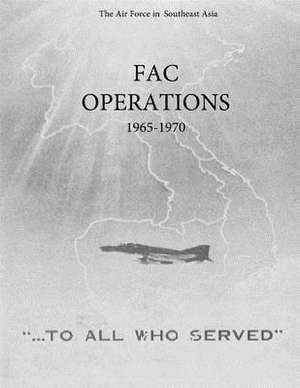Fac Operations 1965-1970
Autor Office of Air Force History and U. S. Airen Limba Engleză Paperback
Preț: 132.87 lei
Nou
Puncte Express: 199
Preț estimativ în valută:
25.43€ • 26.27$ • 21.15£
25.43€ • 26.27$ • 21.15£
Carte disponibilă
Livrare economică 27 februarie-13 martie
Preluare comenzi: 021 569.72.76
Specificații
ISBN-13: 9781508994879
ISBN-10: 1508994870
Pagini: 306
Dimensiuni: 216 x 279 x 16 mm
Greutate: 0.71 kg
Editura: CREATESPACE
ISBN-10: 1508994870
Pagini: 306
Dimensiuni: 216 x 279 x 16 mm
Greutate: 0.71 kg
Editura: CREATESPACE
